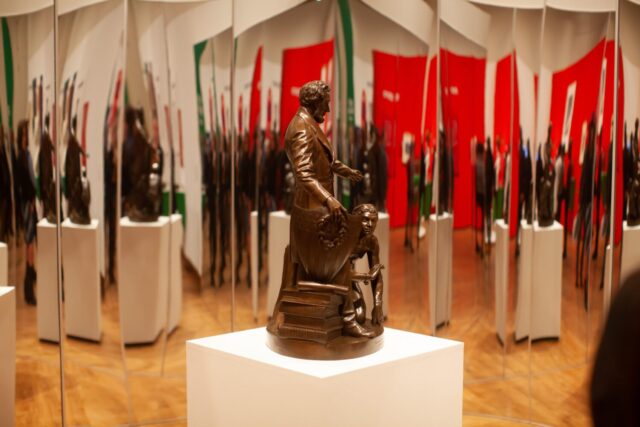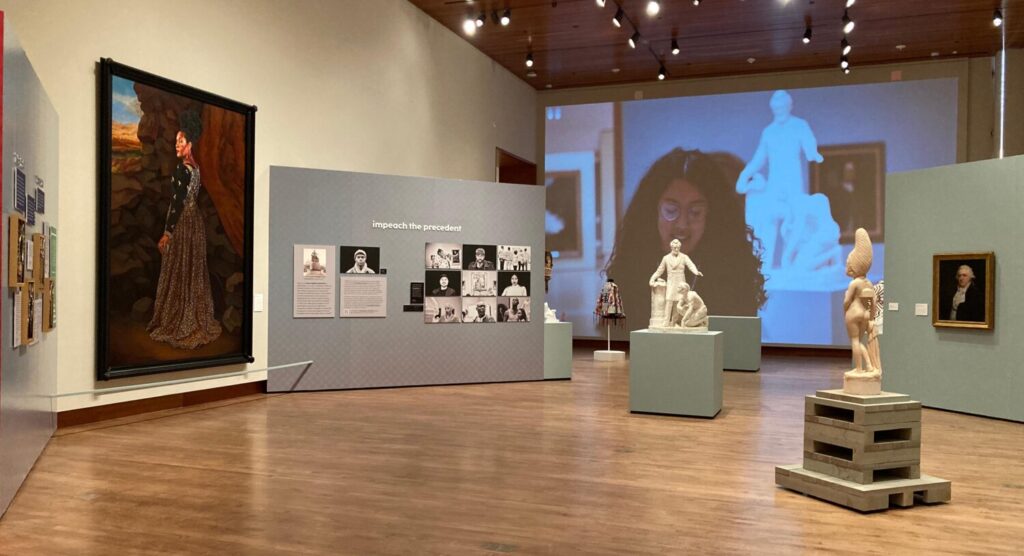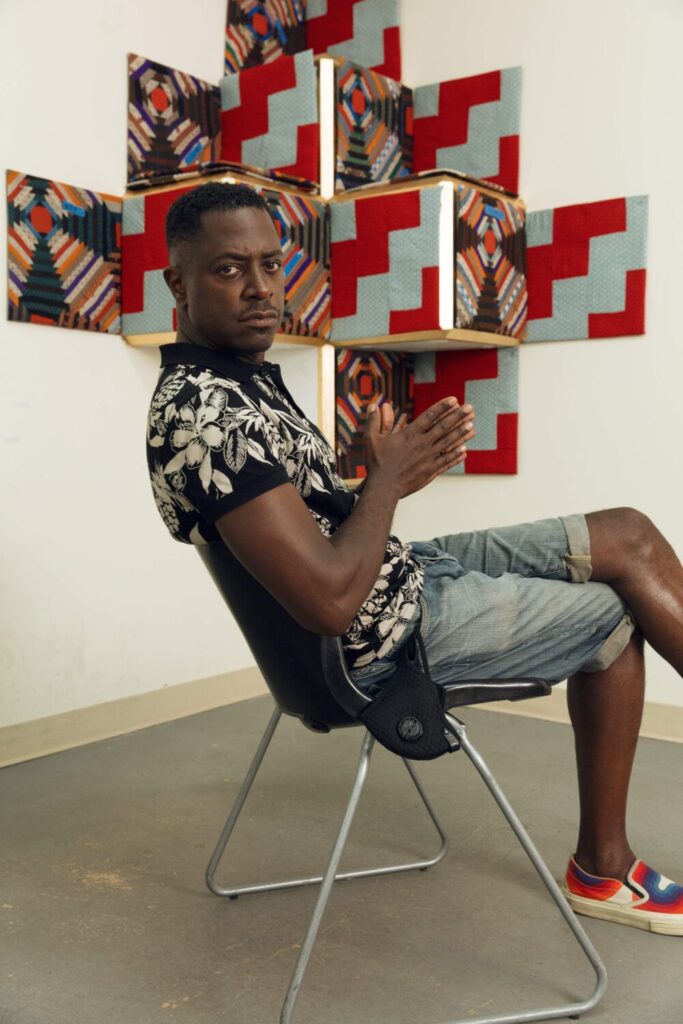
On the heels of the exhibition “Sifting and Reckoning: UW-Madison’s History of Exclusion and Resistance,” which dealt with the university’s past prejudicial activity, the Chazen Museum of Art has unveiled a new art insulation that takes aim at some of the art in its own galleries.
In 2019, artist Sandford Biggers visited the Museum and became interested in Thomas Balls’ salute, Emancipation Group. The statue, situated in the middle of the “Ball Room” in the 4th gallery of the Chazen, depicts Abraham Lincoln and a formerly enslaved man and bears the inscription “And Upon this Act, I invoke the considerate judgment of mankind, and the gracious favor of Almighty God.” While the statue was originally built to celebrate Lincoln’s Emancipation Proclamation and the eventual abolition of slavery, Biggers didn’t feel any sense of that purpose when viewing the statue.
Thus began the process that became the re:emancipation exhibit, currently on display at the Chazen Art Museum until June 25th. Biggers began to work on a response to what he’d seen. The mission materialized with a goal to reframe the art by creating a parallel version of not only the statue itself, but the entire gallery that he’d found it in, this time with a focus on art for and by Black people. The result of this work is the exhibit itself, which includes not only the recreation of the gallery but other timely pieces like a timeline of slavery in the Americas, and a smaller-scale version of the original sculpture. In this smaller-scale version, each individual piece of the sculpture is 3-D printed so that guests can see analysis done of the symbolic meaning of each piece from the pillars included, to the encryption on the statue to the image of the enslaved man himself.

The exhibit notes that the man depicts an almost sanitized version of enslaved people. The man’s back is bare, free of any evidence that he had been whipped or otherwise punished. His hands are free of calluses unlike most enslaved people of the time, whose hands were scarred from unpaid labor. Another caveat that the exhibit notes in its analysis of Emancipation Group, is the position of the formerly enslaved in relation to Lincoln. In the sculpture, Lincoln has his hands raised towards an audience, as if giving a speech, and the enslaved man is on his knees at Lincoln’s side, head bowed. Which begs the question, according to activist Tory Bullock, “If he’s free, why is he still on his knees?”
Bullock was a part of a group of activists in Boston who aimed to have the full-sized version of the Emancipation Group removed from a public park in the city. Similar calls were made to remove another large display of the sculpture in Washington’s Lincoln Park, which was erected in 1876.

Bullock’s question about the wider implications of the statue is something that is carried through the exhibit at the Chazen, as well. In the view of the exhibit and the minds behind it, the answer to the question of the cultural value for Black communities in a statue that is supposed to be about Black liberation is that it’s not providing any. It finds that a statue glorifying white men’s contribution towards the abolition of slavery in a gallery of paintings and sculptures by white artists does not positively affect Black people and Black culture. It almost creates a facade of emancipation and liberation that in the context and the content of the piece itself doesn’t actually exist.
The parallel gallery that Biggers and his team have created shows a different narrative. One that’s less about the act of emancipation but the result of it. Among the artwork displayed in the new exhibit are colleague portraits of local Black leaders like Vel Phillips and Cavalier Johnson. It also includes 10-foot portraits of Black artist Carrie Mae Weems by painter Kehinde Wiley, meant to respond to the 6-foot portrait of 19th-century aristocrat Caroline Montagu by British painter George Hayter that appeared on the side of Emancipation Group in the original gallery.
The end of the exhibit features original works by Sandford Biggers, including a sculpture that serves as his response to Emancipation Group itself. This statue depicts abolitionist and former slave Fredrick Douglass standing side by side with Abraham Lincoln, lifting the veil of ignorance from the president’s head. Not only does this serve as a response to Emancipation Group, but it also serves as a representation of the entire exhibit as patrons’ eyes can be opened to beautiful works of Black art.
Re:Mancipation is on display at the Chazen Art museum until June 25. Entry is free.



























